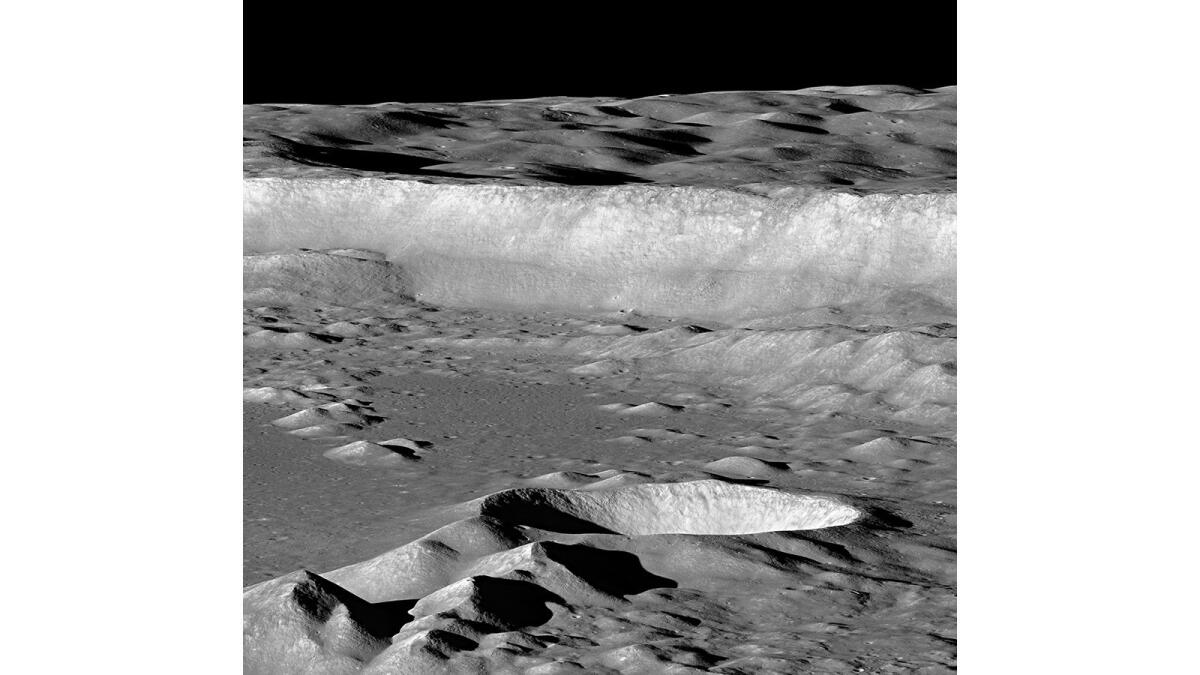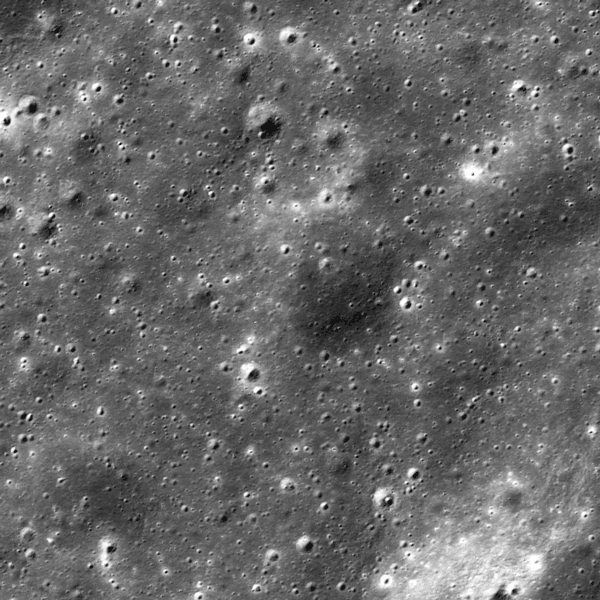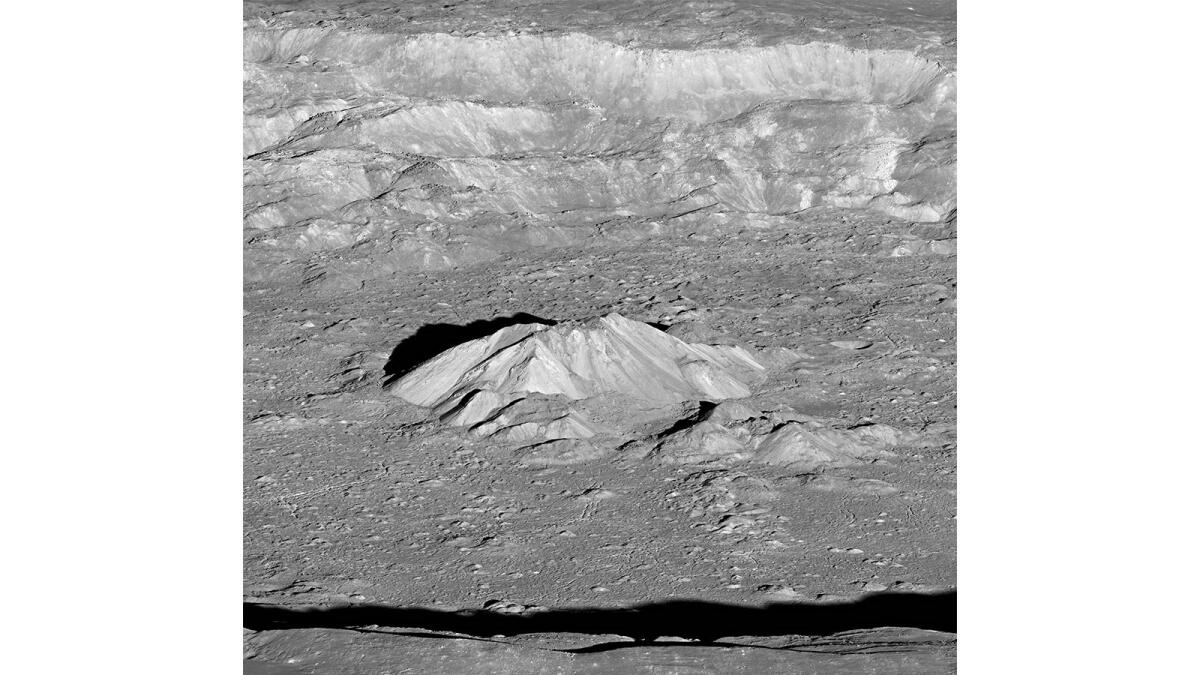Tiny craters, big impact: The moon’s surface may be more dynamic than once thought
If every scar has a story, the moon has quite the tale to tell. Scientists using cameras onboard NASA’s Lunar Reconnaissance Orbiter have found 222 new craters — and discovered striking blast patterns caused by the shrapnel flung out from such violent impacts.
The findings, described in the journal Nature, could help researchers better pinpoint the ages of younger surfaces on the rocky satellite — and hint that the moon is a much more active world than it may seem.
“It’s really showing that the moon is a really dynamic place,” said study lead author Emerson Speyerer, a planetary scientist at Arizona State University.
The moon may not be as intriguing as Mars or mysterious as Jupiter’s moon Europa, but it has played a key role in our understanding of the age of rocky worlds like Earth. That’s because scientists have studied the rate of crater formation on the moon to help estimate the ages of other rocky bodies that, for the most part, we cannot easily sample.
And yet, while the moon’s ancient rate of cratering is pretty well understood, there’s surprisingly little known about the contemporary rate, Speyerer said. That’s because, as you try to age-date younger and younger surfaces (around the 50-million-year mark), you have to use smaller and smaller craters — and the rates for those tiny pockmarks are not well known.

Previous work had compared images from the Apollo missions in the 1970s to images taken by the Lunar Reconnaissance Orbiter in the 2009, in order to look for craters that had formed in the intervening decades. It was painstaking work, done manually, and the researchers found just five new craters in 44 image pairs.
For those scientists, “it was really difficult to go through and actually do that comparison,” Speyerer said.
For this study, he and his colleagues streamlined that process by designing a computer program to help compare 14,092 before-and-after snapshots of random spots that altogether covered about 6.6% of the lunar surface.
“It can take up to eight hours to manually go through an image but with our automatic routine, we can analyze a temporal pair image in about two to three minutes,” he said. “So we’re really cutting down on that time and allowing us to further investigate all of these changes we’ve been finding.”

The analysis turned up 222 new craters that appeared on the “after” images, but not the “before” snapshots, 16 of which were 10 meters in diameter or larger. That’s 33% higher than the current model, which puts the formation rate of such larger craters at just 12 per year.
By comparing the pairs of images (typically taken a year or six months apart), the researchers also discovered distinctive blast patterns caused by molten and vaporized rock jetting outward from the initial impact.
“That’s actually disturbing the surface hundreds and hundreds of crater diameters away from the impact site,” Speyerer said, “and that was something that was previously not really known.”

They also found that more than 47,000 changes in the moon’s surface reflectance (dubbed “splotches” in the paper), many of which are clustered around new impact sites — and many of which lie very far from the crater that probably caused them.
The scientists think that these splotches are caused by the surface regolith (or soil) getting churned up by debris flung out from the original crater impact.
“The impressive population of splotches compared to the number of new craters (47,000 versus about 220) stresses the importance of secondary impact processes on the lunar surface,” the authors pointed out in the study.
Based on these processes, the researchers estimate that the moon’s top two centimeters of regolith gets fully churned every 81,000 years or so — which is more than 100 times faster than previous estimates based on meteoritic impacts (roughly once every 10 million years).
“Geologically, that’s pretty fast,” Speyerer said.
These adjustments could make a big difference when trying to date relatively young surfaces on the moon, he added. If the impact rate is higher than previously thought, then those ages of these areas might actually be even younger than estimated, Speyerer said. This could inform any future plans to send humans back to the moon.
“This is also important if we’re going to put a long term habitat on the moon, a lunar base or something like that,” he said. “The odds of having a direct hit from a meteor or asteroidal material would be relatively small. However, if one occurred 30, 40 kilometers away, you might be getting a lot of these secondaries that are going to be coming over, hitting your lunar base and also messing up the regolith around you.”
Speyerer said he and his colleagues plan to keep scanning the surface to accumulate even more of these before-and-after image pairs. The more they analyze, the better they’ll understand the moon’s impact rate.
Follow @aminawrite on Twitter for more science news and "like" Los Angeles Times Science & Health on Facebook.
MORE IN SCIENCE
Cosmic radiation may leave astronauts with long-term cases of ‘space brain,’ study says
Your phone may be smart, but your doctor still knows more than an app




